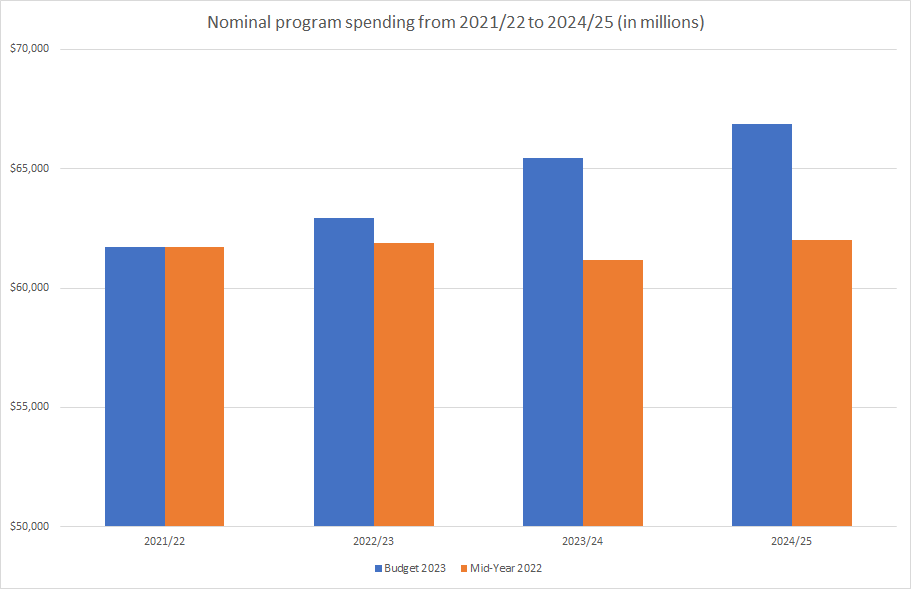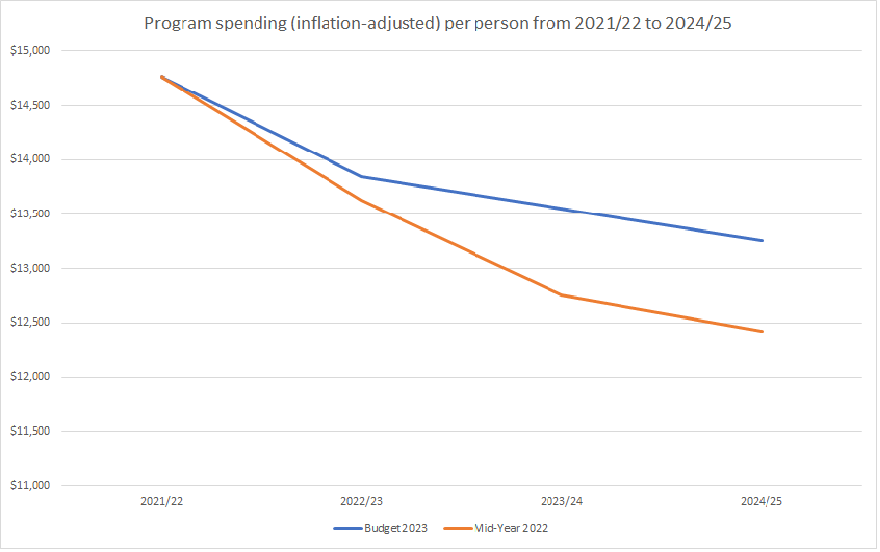Alberta government increased program spending by more than $10 billion

In the last few years, natural resource revenues have surged in Alberta. Unfortunately, the Smith government is failing to capitalize on what could be a generational opportunity to improve Alberta’s finances for the long term.
In fact, despite a lot of small government rhetoric, Premier Smith has responded to high resource prices and revenue by cranking up spending. In its first budget tabled last month, the Smith government increased projected nominal program spending by $10.1 billion (cumulatively over a three-year period) since the fiscal update last fall. As shown in the chart figure, nominal program spending will be $1.0 billion higher in 2022/23, $4.2 billion higher in 2023/24 and $4.9 billion higher in $2024/25. Spending will increase across major spending categories including health care, education and social services.

In inflation-adjusted per-person terms, program spending still increased markedly. The graph below shows the government plans to spend (inflation-adjusted) $223 more per person in 2022/23, $795 more in 2023/24 and $839 more per person in 2024/25 than it planned in its last fiscal update.

Sources: Government of Alberta (2022). 2022/23 Mid-Year Fiscal Update and Economic Statement - November 2022. Government of Alberta (2023). Budget 2023: Fiscal Plan 2023/26 - February 28.
Unfortunately, all this spending will only perpetuate the boom-and-bust cycle that’s defined provincial finances for decades. Put simply, when resource revenue is high, the province has spent freely and when resource revenue has declined, the province found itself at unaffordable spending levels that led to deficits.
But if the Smith government had instead held the line on spending, it could have helped avoid the ongoing boom-and-bust cycle and helped improve Alberta’s economy and finances for the long term. For example, Alberta’s surpluses could have been used to pay down more provincial debt, setting the province on track to eliminate its debt by 2030 and saving Albertans nearly $20 billion in cumulative government debt interest payments.
Moreover, the government could have reintroduced a rainy-day account that limits the amount of resource revenue that can be spent, saving during the good times to help avoid deficits during the bad. Finally, it could have reduced personal income taxes to keep more money in Albertans pockets while helping stimulate strong economic growth.
Instead of setting Alberta up for success in the future, the Smith government repeated past mistakes and responded to a surge in resource revenue by increasing spending, failing to take important steps to put the province on a more sustainable fiscal trajectory.
Authors:
Subscribe to the Fraser Institute
Get the latest news from the Fraser Institute on the latest research studies, news and events.

